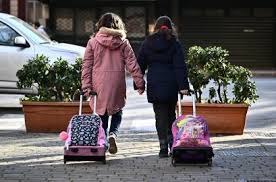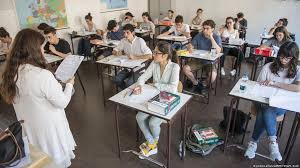Italy: One million ‘non-Italian’ students in schools

Rome: About a million students who are not Italian nationals attend Italian schools, according to a report issued by Italy’s UIL labor union.
In Italy, about a million students — 11% of all schoolchildren — do not have Italian nationality.
The figures were outlined in a report on the 2022-2023 academic year by the schools section of Italy’s UIL labor union.

They mark an increase from the previous year, which stood at 865,388 “foreign” students, according to education ministry figures.
Third of ‘foreign’ students attend primary school
Italy does not grant citizenship automatically to children born in the country to parents who are not Italian nationals.
The citizenship process, both for those born in the country and for those who have lived and worked in it — even for decades — is complex, and initial requests are often denied.
So these children are officially considered “foreigners”, even if they have never lived in another country and have spoken Italian since birth.
Their children, in turn, will also be unable to obtain citizenship except under certain circumstances.

The largest share — around 32% — of these “foreign” students attend primary school, which lasts between age 6 and 11. In second place, with 21%, are those in upper secondary school, which lasts between age 14 and 19.
Following are those in lower secondary school, which lasts between age 11 and 14, with 18%, and those in nursery schools, with 11%.
State schools in northern Italy in the Piedmont, Veneto, Friuli Venezia Giulia, Emilia-Romagna, Lombardy and Liguria regions host over half of these students: 62.7%. Lombardy hosts the most out of all regions in Italy, with 24% of the total share of “foreign” students.
In central Italy, the regions of Tuscany, Umbria, Marche, and Lazio host 22%.
In southern Italy, the Abruzzo, Molise, Campania, Puglia, Basilicata, Calabria, and Sardinia regions host 15% of the total.





